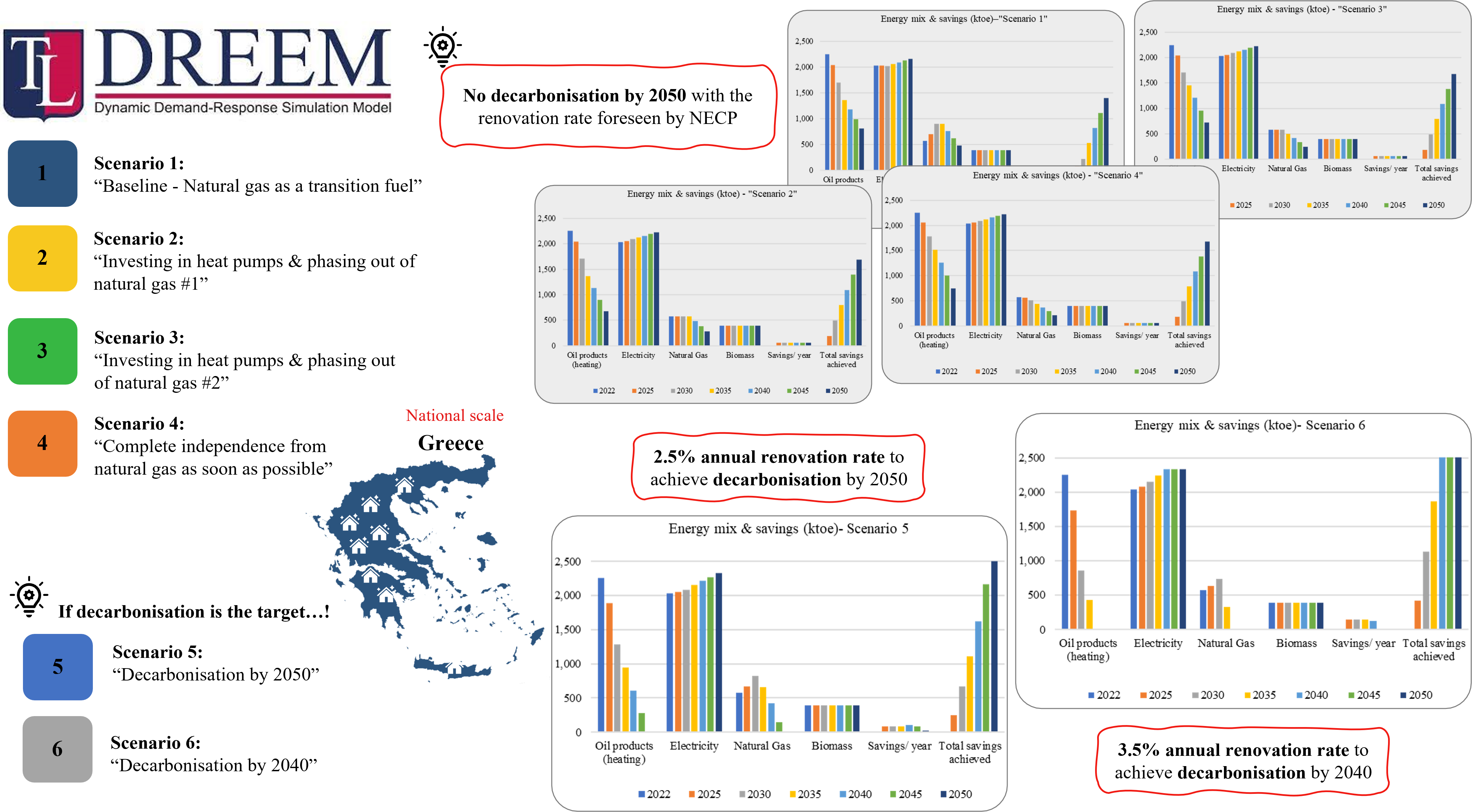
When it comes to the residential sector in Greece, the latest version of the National Energy and Climate Plan (NECP) sets as an objective that by 2030, 12-15% of the total number of dwellings in the country, i.e., up to 60,000 households per year, will be upgraded in terms of energy efficiency (in part or in full), while targeting in the increase of the natural gas consumption, and, thus, the country’s energy dependency.
However, the outbreak of the energy crisis in Europe stemming from the invasion of Ukraine by Russia and the strategic European Union (EU)’s decisions regarding the faster reduction of the dependence on fossil fuels, and especially Russian oil and gas, as well as further boosting energy efficiency gains and the share of renewables across all sectors, raises questions about the viability of the current national planning in Greece and the decisions around the dependency on natural gas.
In this context, we explored the two following Research Questions (RQs):
RQ1: Is the NECP’s target of 60,000 renovations per year able to lead to the decarbonisation of the residential sector in Greece by 2050?
RQ2: Should Greece proceed with the current national planning, investing in natural gas as a transition fuel, also increasing national energy dependency in fossil fuels?
Using the Dynamic high-Resolution dEmand-sidE Management (DREEM) model we simulated 6 different energy transition scenarios: i. “Scenario 1: “Baseline”, ii. “Scenario 2: Investing in heat pumps & phasing out natural gas #1”, iii. “Scenario 3: “Investing in heat pumps & phasing out natural gas #2 (Phase-out of existing natural gas boilers earlier compared to scenario 2)”, iv. “Scenario 4: Complete independence from natural gas as soon as possible”, v. “Scenario 5: Decarbonisation by 2050”, vi. “Scenario 6: Decarbonisation by 2040”.
Modelling outcomes showed that the annual renovation target of 60,000 household per year (1.5% annual renovation rate) envisioned by the latest version of the NECP cannot lead to decarbonisation by 2050. In addition, when investing in natural gas as a transition fuel more energy derived from fossil fuels (oil products and natural gas) is consumed in 2050 compared to the scenarios investing in electrification. If decarbonising the residential sector by 2050 in Greece is the target, the annual renovation rate needs to be increased to 2.5% (100,000 households annually renovated), while an annual renovation rate of 3.5% (140,000 households annually renovated) could even allow reaching more ambitious targets, as decarbonisation levels by 2040. In addition, investing in electrification could lead to a less harmful environmental footprint and to lower costs at both the household and the national level by 2050, compared to the existing planning to invest in natural gas as a transition fuel. Overall, our findings highlight the need for more ambitious targets for the achievement of the decarbonisation targets set by the EU, as well as the need for greater focus on investing in electrification rather than in natural gas.
Paper or report: Download DownloadModels used
DREEM
Dynamic, object-oriented, and equation-based high-resolution simulation model
DetailsSENTINEL case study
Case study: National – Greece
Country-specific case with focus on coal phase-out together with a large domestic renewable potential.
Details